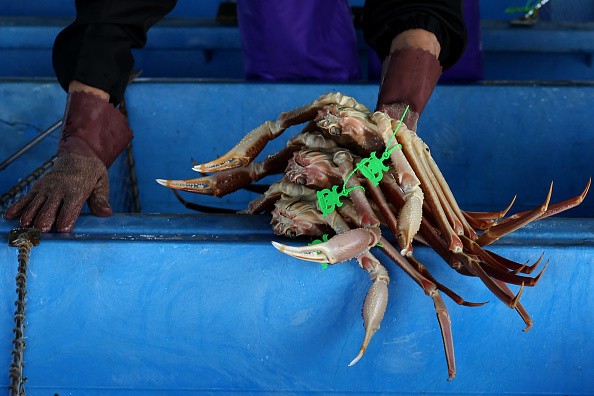The sudden disappearance of snow crabs from the waters in Alaska, specifically in the Bering Sea, caused concerns among environmentalists. The record said that from eight billion population in 2018 declined to one billion in 2021.
The snow crab has been one of the most abundant species in the Bering Sea, serving as a source of livelihood in Alaska's cold water areas.
NOAA Fisheries explained that the appearance of snow crab includes a hard rounded shell with noticeable four pairs of walking legs and one-pair claws. The looks show a lighter color underneath and a colorful brownish on the top, with eyes being greenish-blue or green.
According to NOAA Fisheries, the snow crab population reached a significant below level, noting the importance of rebuilding a plan to populate the snow crab in Alaska's waters.
Snow crabs live on the coasts of Alaska, including in areas of the Chukchi Seas, Bering, and Beaufort.
Low abundance

Despite the abundance of snow crabs in Alaska's waters, CNN reported that the Alaska Board of Fisheries and North Pacific Fishery Management Council said that the snow crab population reached below what should have been the regulatory threshold, which could affect the fishery of the said species.
Besides overfishing, Michael Litzow told CNN that human-caused climate change contributed to the disappearance of snow crabs in the area, noting that the warming of ocean and sea ice could affect the species. Litzow is a lab director for NOAA Fisheries.
According to CNN, Litzow explained that there are attribution studies in the Bering sea in 2018, noting that studies showed the low-ice conditions and temperatures in the Bering Sea are attributed to global warming. The record is worth noting because snow crabs stay in areas below 2 degrees Celcius, and water warming could make the area inhospitable.
Also Read : Researchers Gather Thousand Marine Micro-organisms Samples to Understand Ocean Plankton and Pollution
The climate change impact and the warming of oceans in the Arctic have resulted in the loss of sea ice in the said region, which could associate with the disappearance of snow crabs in the area.
On the other hand, Biologist Ethan Nichols of the Alaska Department of Fish told CNN that restoring the snow crab populations in the area is important, resulting in the fisheries' closure for research and low snow crabs in the area.
Snow Crabs
NOAA Fisheries, which is part of managing the snow crabs in Alaska, said that the biology of snow crabs in terms of size: Male could grow up to six inches, while the female is commonly below three inches. The report said snow crabs have a life span or could live for up to 20 years.
The snow crab diet includes worms, snails, algae, shrimp, and fish which use their claws to catch and break their prey. In addition, the snow crabs' larvae eat zooplankton and phytoplankton, NOAA explained.
Records show that female snow crabs could have 100,00 eggs, which hatch based on the available food in the water.
For more similar, don't forget to follow Nature World News.
© 2025 NatureWorldNews.com All rights reserved. Do not reproduce without permission.





